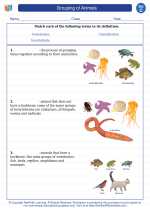Birds
Birds are a group of warm-blooded vertebrates, characterized by feathers, beaks, and the ability to lay eggs. They are a diverse group, with over 10,000 known species found in various habitats around the world. Birds play a vital role in ecosystems as pollinators, seed dispersers, and predators of insects and small animals.
Anatomy of Birds
Feathers: Birds have unique feathers that provide insulation, enable flight, and serve as a display for courtship and communication.
Beaks: The beak, or bill, of a bird is adapted to its feeding habits. Different shapes and sizes of beaks allow birds to consume a wide variety of foods.
Skeletal System: Birds have lightweight skeletons with hollow bones, which aid in flight. They also have a unique arrangement of bones to support their wings and facilitate aerial maneuvers.
Adaptations for Flight
Wings: Birds have specialized wings that allow them to fly. The shape and structure of wings vary among species, enabling different flight patterns and behaviors.
Respiratory System: Birds have efficient respiratory systems, with air sacs that allow for continuous airflow during both inhalation and exhalation. This adaptation supports the high energy demands of flight.
Reproduction and Life Cycle
Eggs: Birds lay eggs, which are usually hard-shelled and laid in nests. Incubation of the eggs is carried out by one or both parents, depending on the species.
Life Cycle: Birds go through a life cycle that includes hatching from eggs, growing into juveniles, reaching sexual maturity, and engaging in courtship and mating behaviors.
Diversity of Birds
Species Diversity: Birds are found in a wide range of environments, including forests, grasslands, deserts, and aquatic habitats. This diversity has led to the evolution of various adaptations and behaviors among different bird species.
Migration: Many bird species undertake long-distance migrations, traveling between breeding and wintering grounds. This behavior is driven by seasonal changes and food availability.
Conservation and Importance
Importance in Ecosystems: Birds contribute to ecological balance by controlling insect populations, dispersing seeds, and serving as indicators of environmental health.
Threats: Birds face various threats, including habitat loss, climate change, pollution, and illegal hunting. Conservation efforts are essential to protect bird populations and their habitats.
Study Guide
- Describe the unique features of bird feathers and their functions.
- Explain how the beak of a bird is adapted to its feeding habits, providing examples of different beak shapes and associated diets.
- Compare the skeletal system of birds to that of other vertebrates, highlighting adaptations for flight.
- Discuss the importance of wings and the respiratory system in facilitating bird flight.
- Outline the reproductive process of birds, including egg laying, incubation, and parental care.
- Identify different bird species and their habitats, discussing how environmental factors have influenced their adaptations.
- Examine the significance of bird migration and the challenges associated with long-distance travel.
- Evaluate the impact of human activities on bird populations and the measures taken for bird conservation.
[Birds] Related Worksheets and Study Guides:
.◂Science Worksheets and Study Guides Third Grade. Grouping of Animals
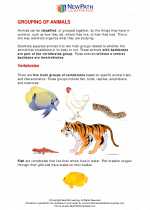
 Activity Lesson
Activity Lesson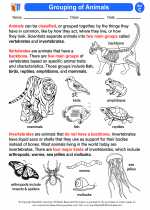
 Worksheet/Answer key
Worksheet/Answer key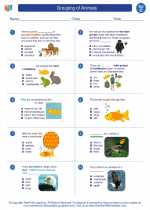
 Worksheet/Answer key
Worksheet/Answer key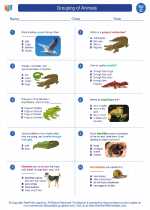
 Worksheet/Answer key
Worksheet/Answer key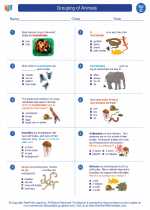
 Worksheet/Answer key
Worksheet/Answer key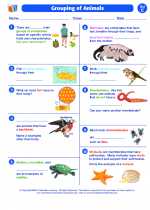
 Vocabulary/Answer key
Vocabulary/Answer key